Description of kruknek zucchini and its cultivation
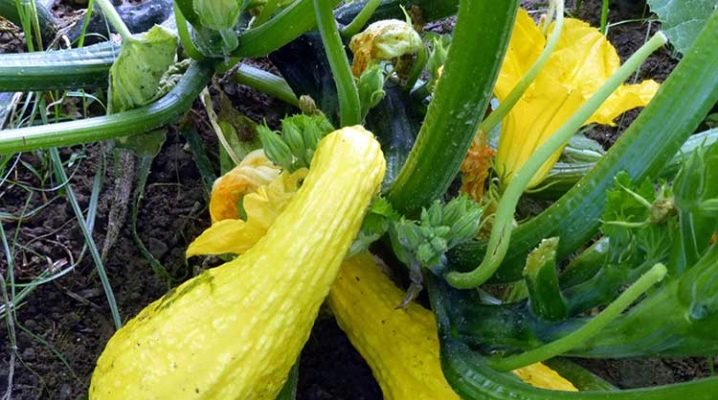
Many gardeners have disagreements about the crooknek plant. Some consider it a zucchini, others - a pumpkin crop. In this article, we will analyze what it is, what varieties exist and how to grow a good harvest.
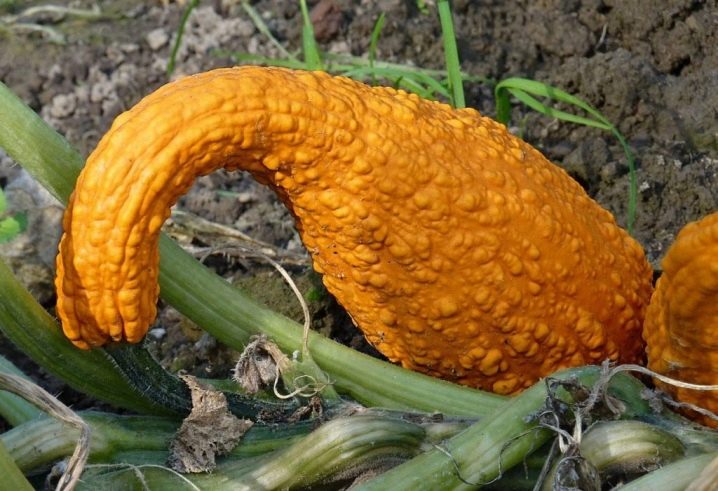
What it is?
The word "kruknek" in translation from English literally means "curved neck" or "twisted neck". The fruit has an oblong shape, twice as large in volume in one of its halves... It seems that in the area closest to the trunk of the plant, the fruit has dried up. However, this is a normal shape for a vegetable, moreover, the shape of the hook allows you to hang the crop to dry.
Kruknek is closely related to and similar to crops such as squash and pumpkin. It also has similar germination methods, required care, and possible diseases. Therefore, one can often hear from gardeners the name "squash kruknek".
And this is really so: the Cucurbita pepo family includes zucchini, and pumpkins, and kruknek, and from Latin it translates as "pumpkins".
The surface of the fruit has an interesting appearance: it is all covered with bubbles. The unusual appearance hides a treasure of vitamins and nutrients. Crank fruits are advised for those who are struggling with overweight, atherosclerosis, cholesterol and high sugar levels. Most of those who have tried this vegetable note that the crooknek is also very tasty.
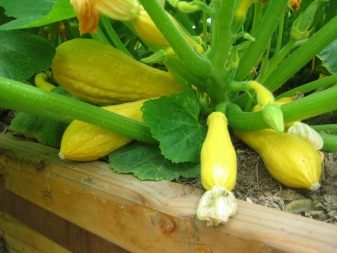
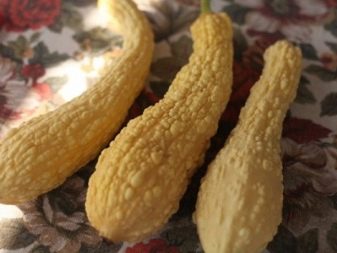
The crooknek has a soft skin, it is even softer than squash. Most often, its fruits are consumed fresh and in salads. Crooknek lovers also advise to dry, pickle, fry it. Crank seeds are also used: they are as tasty and nutritious as pumpkin seeds.
Kruknek can be stored (in good conditions) for six months without loss of color. This makes it also an interesting decorative element for country style lovers. A little sun will be in your house even in winter. If you want different colors of zucchini, you can plant 2 or more varieties of yellow and orange.
It should be noted that due to its characteristics and original cultivation places (Asia and Central America), the crooknek does not tolerate frost. It is grown only in warm climates in sunny areas protected from strong winds. Such a squash is considered an annual plant.
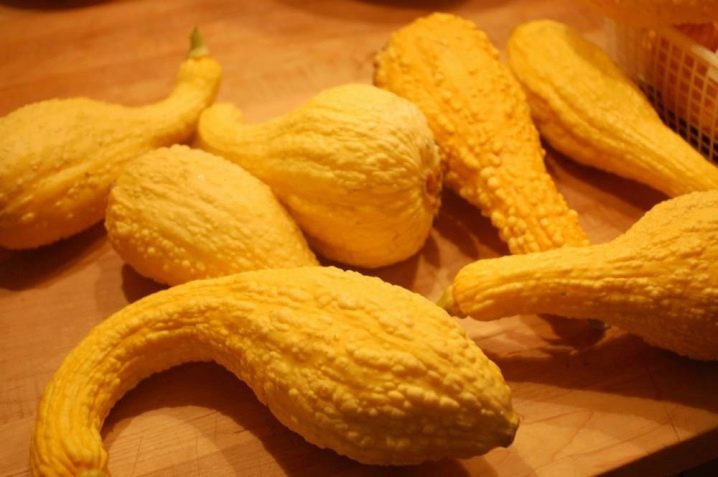
Varieties
There are many varieties of kruknek at the moment. Let's take a look at some of them. The first three of those described below are early varieties, and the second are medium in terms of terms. The minimum number of days from germination to the first wave of the harvest is 45, the maximum is 70.
- "Seneca"... The vegetable grows yellow and has a glossy, smooth, jug-shaped surface. There are about 10 pieces per bush.
- "Giant". Fruits in the form of a pear, bright yellow. Strongly pimply crankshafts are based on one bush in the amount of 8-10 pieces.
- "Giraffe"... Yellow-orange fruits, reaching one kilogram, grow in the form of a club. The variety contains a lot of vitamin A and ascorbic acid.
- "Golden scallop"... A variety with large fruits, up to 2 kg. Considered a heavyweight among his fellows.
- "Summer"... It has small and smooth orange fruits weighing up to 0.4 kg.
- Scrooge. Variety with bright orange fruits, reminiscent of a club with large tubercles. On average, a vegetable reaches a weight of 0.6-0.7 kg.
The latter variety is slightly more popular than the others. We love Scrooge for its sweet pulp with hints of nut. To achieve this result, the fruits hang on the bush for no more than 2 weeks.Cooking is carried out without peeling the skin, which greatly simplifies the whole process.
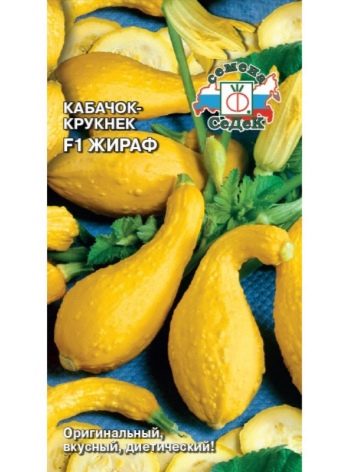
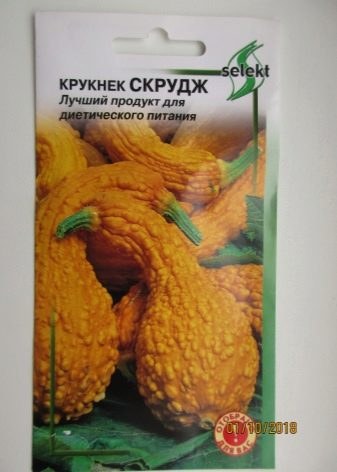
How to grow seedlings?
The method of growing seedlings is suitable for those who wish to get an earlier harvest. The seed is planted in plastic cups or peat pots. Do this so that by the time of transfer the bushes are 20-25 days.
Seeds should be purchased from trusted producers. In the middle lane, they are sown around mid-to-late April, so that by May they can be planted in open ground. In more northern regions, seeds are planted closer to May and transferred to the ground only in June.
If your material is processed, then it does not need soaking. Otherwise, the seeds are left in a weak solution of potassium permanganate for 30 minutes. After sowing, the seedlings give their first shoots within 5-7 days. If you have introduced fertilizers and humus into the soil in advance, then additional fertilizing is not required.
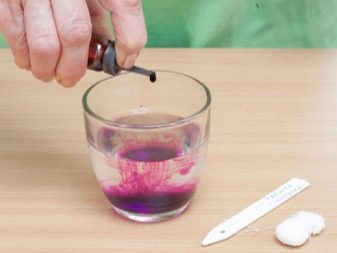

In case you forgot to do this, gardeners recommend wood ash solutions or complex fertilizers. The deposit is carried out after the appearance of the second full-fledged sheet. For good growth of seedlings, heat, light and timely soil moisture are also required as it dries, always with warm, settled water.
Before planting, the seedlings are kept in the sun and hardened (2 weeks). At this time, a plot is being prepared: the earth is dug up, top dressing is applied to enrich it. Water it abundantly and cover with a film (or agrofibre) so that the soil warms up faster and does not lose moisture.
Planting is advised to be carried out in the evening, mulching the ground around the bush with compost, straw or rotted sawdust. In the first week, in the absence of good weather, the bushes are covered with a film at night, and also shaded from direct sunlight.
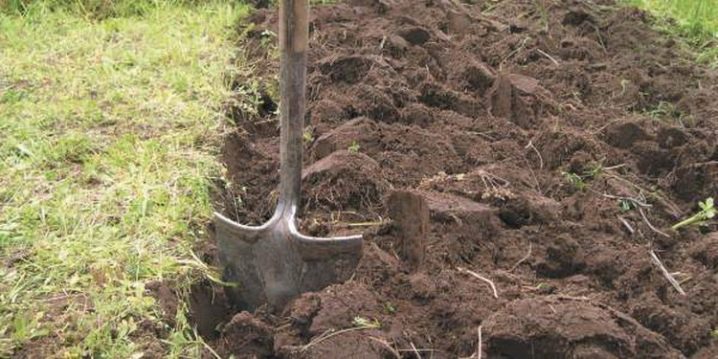
Landing in open ground
As mentioned above, kruknek is planted in sunny areas. The chosen location must be lit for at least 5 hours every day, ideal if the sun hits the beds in the afternoon heat: the plant does not particularly like hot air.
The plant does not need to be planted in beds: they can be placed pointwise or along the edges of other beds. The soil for kruknek is suitable for black earth or loamy, with a neutral level of acidity. The culture grows well in areas where cabbage, legumes, herbs, onions, garlic, carrots, beets, tomatoes or potatoes were previously grown.
Kruknek is not recommended to be cultivated next to related crops: it is capable of self-pollination.
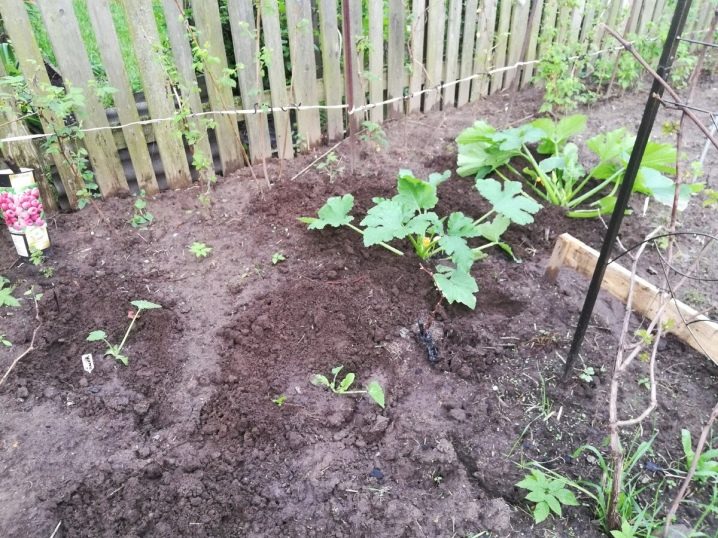
The method of planting seeds in open ground is more often practiced in regions of the middle belt and to the south, where the climate is more favorable. The site is being prepared in the fall. They dig up the earth, remove weeds, introduce compost or rotted manure, level the plot. It is also watered and covered.
Land warmed up to +16 degrees and good weather conditions are favorable signs for sowing. The sufficient depth of the holes is 3-4 cm, the planted material is abundantly watered and covered with foil. The planting pattern is 70x70 cm. If you do not have a film, gardeners are advised to take cut-off five-liter plastic bottles. They are kept closed until shoots appear, then the cover is removed for ventilation.
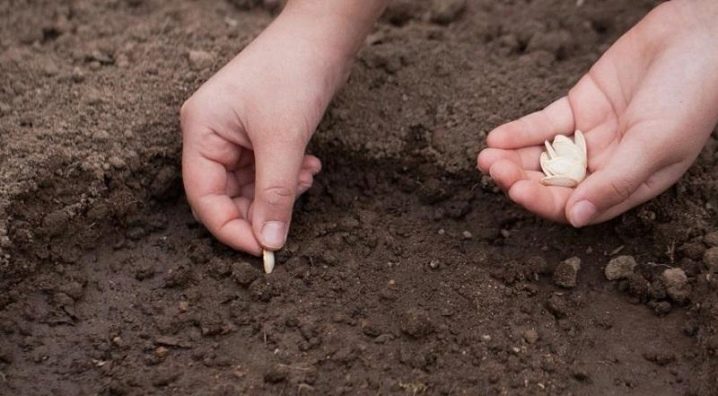
Care
Plants need timely care. However, it cannot be said that kruknek is a very capricious culture. The minimum amount of dressings per season is 3. Krivosheyka responds well to solutions from chicken manure or mullein. Also, gardeners do not shy away from humus and wood ash infusions.
Plants are not watered with cold water: it destroys the roots. Watering is carried out 2 times a week. Advance mulching is a good idea. Kruknek is not pinched, since it has medium branching.
If the plant has more male flowers, pinch its upper lashes, then the lateral ones that form female flowers enter into growth.
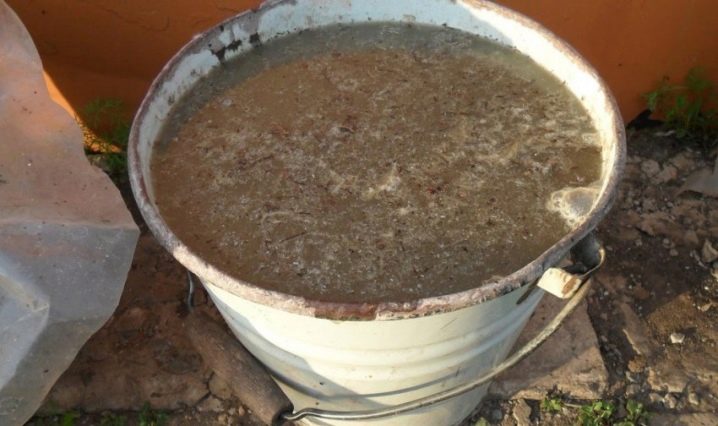
Diseases and pests
Kruknek copes well with fungal and viral infections, but is prone to powdery mildew in the event of a rainy summer and improper watering.
Cope with the disease:
- fungicides;
- Bordeaux mixture (one percent);
- a solution of milk (1 liter per bucket of water) and brilliant green (10 drops).
Zucchini loves to feast on aphids. It is driven off by dusting with wood ash or spraying with a solution of the same ash. An alternative is a solution of laundry soap or insecticides.
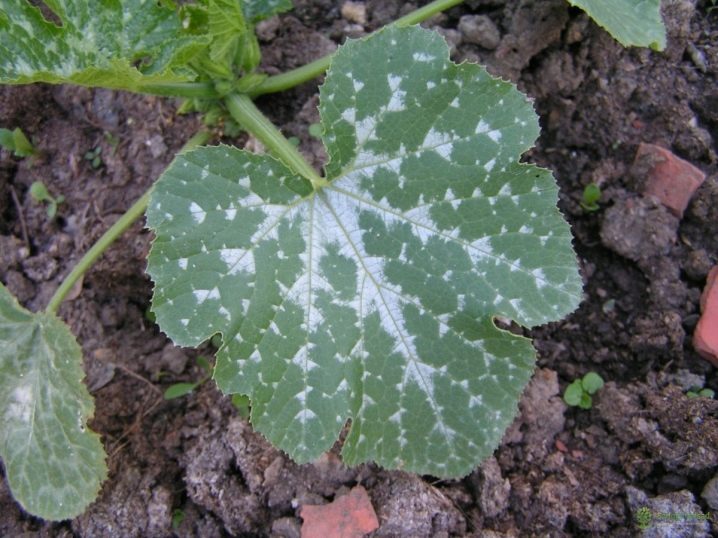
Harvesting and storage
If you grow crookneck for decoration, you can hold it on the bush for a longer time. If for food, then fruits weighing 0.4-0.5 kg are removed from the bush until tubercles appear. The skin during this period is still soft, and the stalk is more or less easy to saw (sometimes a hatchet is used). The crop is harvested about twice a week. Fruits reach, as a rule, 15 cm. After collecting the first wave, the bush forms new ovaries.
It is important that when the stalk is cut, part of it (3-4 cm) should remain on the fruit. The crop of this culture has good keeping quality and does not need to be stored in the refrigerator. Kruknek is safely stored on the open floor in baskets or boxes.
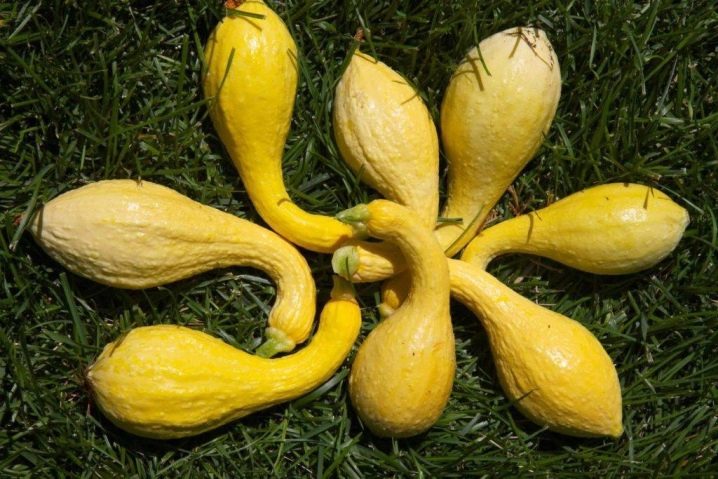













The comment was sent successfully.